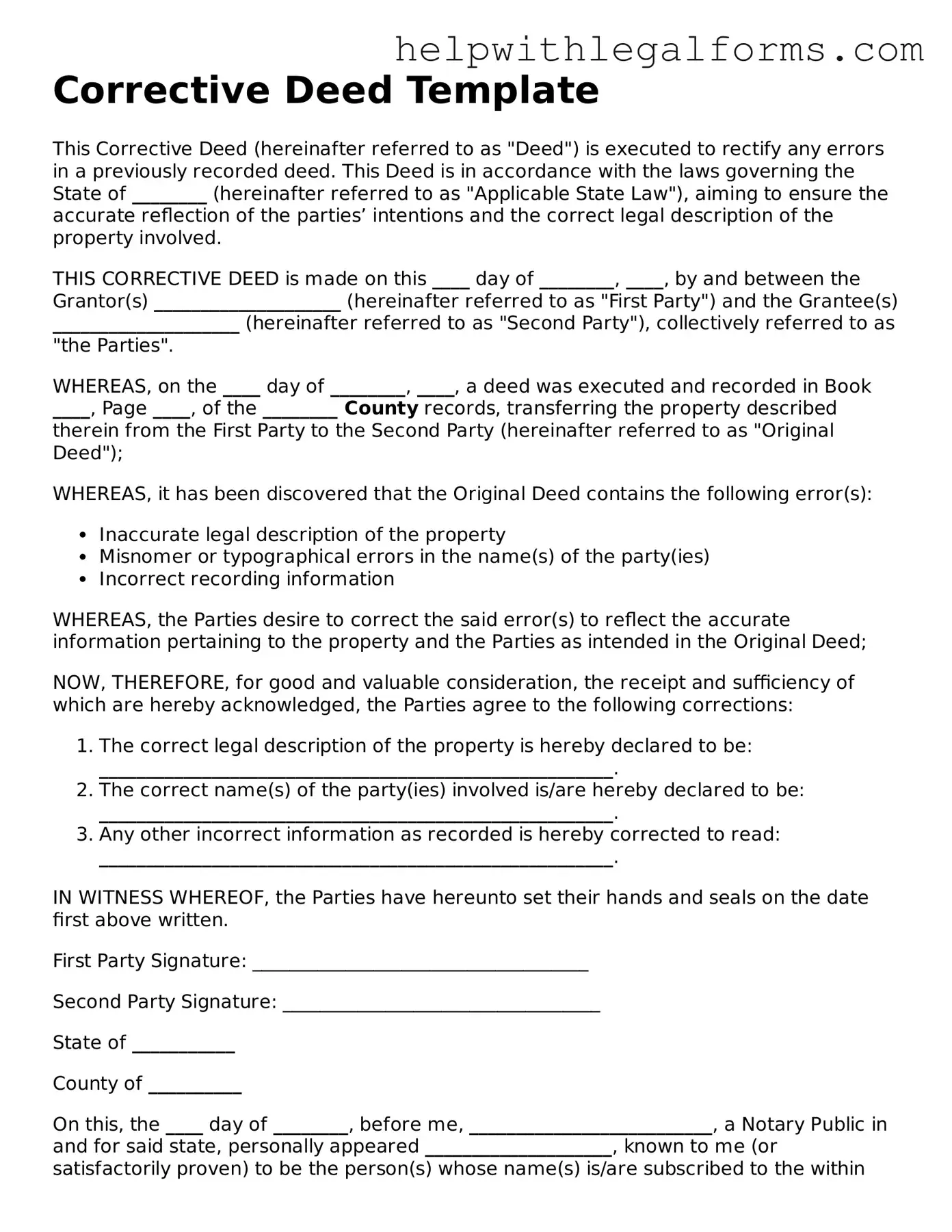Corrective Deed Template
This Corrective Deed (hereinafter referred to as "Deed") is executed to rectify any errors in a previously recorded deed. This Deed is in accordance with the laws governing the State of ________ (hereinafter referred to as "Applicable State Law"), aiming to ensure the accurate reflection of the parties’ intentions and the correct legal description of the property involved.
THIS CORRECTIVE DEED is made on this ____ day of ________, ____, by and between the Grantor(s) ____________________ (hereinafter referred to as "First Party") and the Grantee(s) ____________________ (hereinafter referred to as "Second Party"), collectively referred to as "the Parties".
WHEREAS, on the ____ day of ________, ____, a deed was executed and recorded in Book ____, Page ____, of the ________ County records, transferring the property described therein from the First Party to the Second Party (hereinafter referred to as "Original Deed");
WHEREAS, it has been discovered that the Original Deed contains the following error(s):
- Inaccurate legal description of the property
- Misnomer or typographical errors in the name(s) of the party(ies)
- Incorrect recording information
WHEREAS, the Parties desire to correct the said error(s) to reflect the accurate information pertaining to the property and the Parties as intended in the Original Deed;
NOW, THEREFORE, for good and valuable consideration, the receipt and sufficiency of which are hereby acknowledged, the Parties agree to the following corrections:
- The correct legal description of the property is hereby declared to be: _______________________________________________________.
- The correct name(s) of the party(ies) involved is/are hereby declared to be: _______________________________________________________.
- Any other incorrect information as recorded is hereby corrected to read: _______________________________________________________.
IN WITNESS WHEREOF, the Parties have hereunto set their hands and seals on the date first above written.
First Party Signature: ____________________________________
Second Party Signature: __________________________________
State of ___________
County of __________
On this, the ____ day of ________, before me, __________________________, a Notary Public in and for said state, personally appeared ____________________, known to me (or satisfactorily proven) to be the person(s) whose name(s) is/are subscribed to the within instrument, and acknowledged that he/she/they executed the same for the purposes therein contained.
IN WITNESS WHEREOF, I hereunto set my hand and official seal.
Notary Public Signature: ___________________________________
My Commission Expires: __________________
